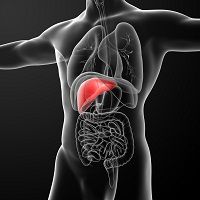Article
NAFLD and Eating Habits: Slow Down!
Author(s):
Nonalcoholic fatty liver disease (NAFLD) is now the most common hepatic pathology in developed nations. Public health officials are worried, as NAFLD increases the likelihood of diabetes, cardiovascular disease and chronic kidney disease.

Nonalcoholic fatty liver disease (NAFLD) is now the most common hepatic pathology in developed nations. Public health officials are worried, as NAFLD increases the likelihood of diabetes, cardiovascular disease and chronic kidney disease.
NAFLD is clearly associated with obesity. Recent studies suggest that lifestyle and eating habits, especially eating a large proportion of calories later in the day, may influence its development. Researchers from the National Institute of Health Sciences and Fukuoka University in Japan (where 27% of the population has NAFLD) recently studied lifestyle habits and eating behaviors to look for possible links. They found that eating fast and eating at bedtime significantly increases the likelihood of NAFLD.
These researchers conducted a retrospective cohort study to determine if and how eating behaviors might be linked to development of NAFLD. The study population was selected from among health insurance beneficiaries (N=2254) who did not have a diagnosis of NAFLD. Participants had completed physicals during 2009 and agreed to specific health checkups 2012 in Fukuoka and Shizuoka Prefectures. The researchers excluded heavy drinkers and non-drinkers.
Participants self-reported several factors including eating speed and eating before bedtime using a self-administered questionnaire. Approximately 40% of participants indicated that they either ate quickly, ate at or near bedtime, or both.
During the 3-year study period, 52 (2.3%) participants developed NAFLD. The researchers determined that participants who ate before bedtime (but did not eat fast) were more than twice as likely to develop NAFLD.
Participants who ate fast and also ate before going to bed were 2.5 times more likely to develop NAFLD than those who did not.
The researchers suggest that NAFLD develops when hepatic triglycerides accumulate after overeating, and the individual remains physical inactive. Going to bed soon after eating is an obvious example of this type of situation.
Clinicians need to remind patients about the risks of eating too fast and retiring for the night too soon after dinner. It's reasonable to recommend mild to moderate exercise after eating, too. Modifying these poor eating behaviors could reduce risk of NAFLD.
This study appears in the November 2015 issue of the journal Population Health Management.





